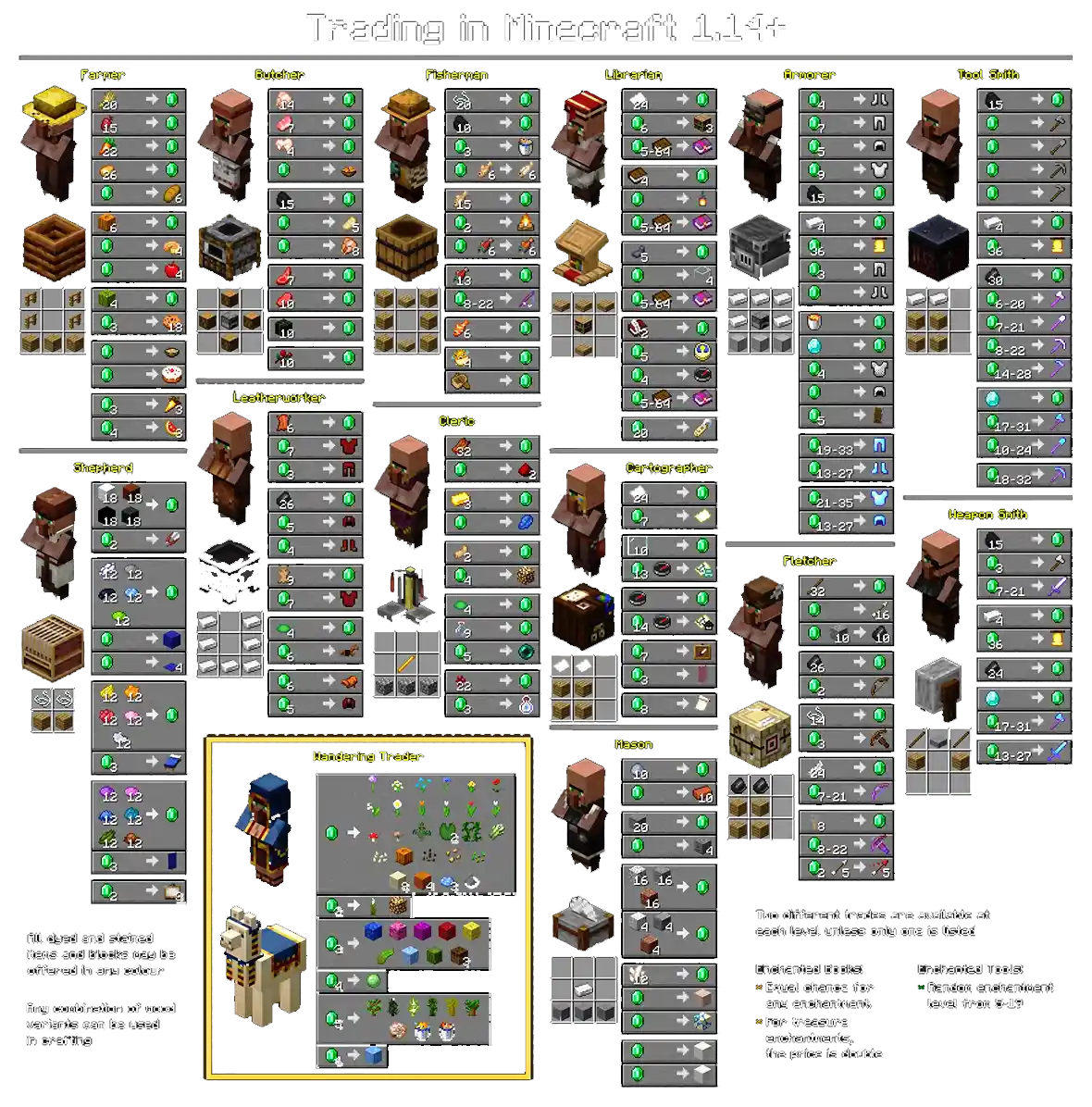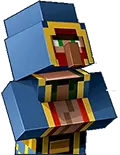Configuring and managing your server
How to Master Village & Pillage Trading in Minecraft

Villages in Minecraft underwent a major overhaul in the 1.14 Village & Pillage update. With this guide, you will learn how to effectively manage trades and villagers in the game. Get ready to become a pro at securing the items you need!
Start Trading
Trading with villagers in Minecraft is a fun and useful way to acquire resources that are difficult to find or obtain. To trade with a villager, you will need to first find a village and locate a villager. Once you have found a villager, you will need to interact with them by right-clicking on them.
You will then be presented with a trading interface that displays the items the villager is offering in exchange for emeralds, which are a rare currency in Minecraft. To complete a trade, you will need to place the emeralds in the trade box and then select the item you wish to receive.
In Minecraft, there are several types of villagers that you can find and trade with. These include:
Librarian: A librarian villager will trade bookshelves, enchanted books, and paper.
Farmer: A farmer villager will trade seeds, vegetables, and other crops.
Fisherman: A fisherman villager will trade different types of fish and fishing-related items, such as fishing rods and buckets of fish.
Shepherd: A shepherd villager will trade wool, string, and other materials related to wool.
Cleric: A cleric villager will trade various potions, such as strength and regeneration, as well as enchanted golden apples.
Toolsmith: A toolsmith villager will trade various tools, such as pickaxes, axes, and hoes, as well as emeralds.
Weaponsmith: A weaponsmith villager will trade weapons, such as swords, bows, and arrows, as well as emeralds.
Armorer: An armorer villager will trade armor, such as leather, gold, and iron armor, as well as emeralds.
Cartographer: A cartographer villager will trade maps and the materials needed to make them, such as paper and compasses.
Leatherworker: A leatherworker villager will trade leather-related items, such as leather armor, saddles, and horse armor.
Butcher: Offers cooked meat and emeralds Job Block: Smoker
Fletcher: Offers bows, arrows, flint, and Tipped Arrows Job Block: Fletching Table
Mason: Offers cut versions of blocks and bricks Job Block: Stonecutter
Nitwit: Offers nothing and is essentially useless
Unemployed: Offers nothing but can be assigned a job
Remember that the items that each villager trades can change based on their profession, and the availability of items may also vary. Some villagers may offer better deals or unique items, while others may charge more. It's also worth noting that the prices of items can change over time, so it's a good idea to check back with a villager periodically to see if they have any new or updated offerings.
Trading with villagers in Minecraft is a great way to obtain valuable resources and enhance your gaming experience. So don't be afraid to interact with villagers and see what they have to offer!
Gain Experience
Each time a trade is performed between a player and a villager, both gain experience. As villagers level up, new tiers of trades are unlocked, with progressively better items available. Villagers have 5 levels of trades, represented by badges on their clothing ranging from Novice (Stone), Apprentice (Iron), Journeyman (Gold), Expert (Emerald), to Master (Diamond).
Become Popular
Popularity is a mechanic that determines the level of trust that a player has earned with a villager. This mechanic is closely tied to trading with villagers. The more successful trades a player completes with a villager, the higher the villager's popularity with that player will become. A higher popularity level results in better trade options and lower prices for items. Conversely, if a player attacks or kills a villager, the player's popularity with that villager will decrease, resulting in worse trade options and higher prices.
It's important to note that each player has their own individual popularity level with a villager, so it's possible for multiple players to have different levels of popularity with the same villager. Additionally, the popularity level resets if a villager is replaced by another villager, or if the player is too far away from the villager for a certain period of time.
Overall, the popularity mechanic helps to encourage players to interact with villagers in a positive manner, and provides an incentive for players to build good relationships with them.
Trading Stocks
Trading Stock in Minecraft In the 1.14 update, Mojang introduced the concept of 'Supply and Demand' to Minecraft. This means that if you perform a trade too many times, the villager will run out of stock and the price (the number of items or emeralds required) will increase if the item is traded frequently. Each trade can be performed up to 4 times before the stock runs out, and villagers will restock twice a day. If an item isn't traded at all, its price will decrease.
Village Pillaging
Instead of trading, you can raid a village to obtain loot from the structures and villagers. This loot can include valuable ressources and items, such as emeralds, food, weapons and tools. attack the villagers. Instead of pillaging, players are encouraged to engage in positive and constructive activities within the game, such as building and exploring, completing quests, and trading with villagers. These activities can provide a more fulfilling and enjoyable gaming experience, and help to maintain a friendly and respectful community.
Villager Appearance
Villagers' appearances change depending on the biome they are in. To keep each job distinct, they retain specific characteristics related to their profession, such as farmers having straw hats and librarians wearing glasses.
Wandering Trader
 | A Wandering Trader is a special type of Villager that randomly spawns in the world and travels from location to location. They appear with a cart pulled by two llamas and can be interacted with to trade various items. The items they offer are usually unique and can't be found in other villagers' trades. They also offer rare goods and materials that can be difficult to obtain through other means. To trade with a Wandering Trader, you simply need to approach them and right-click to open the trade window. Note that Wandering Traders only stay in one location for a limited time, so it's important to act quickly if you're interested in trading with them. |
Conclusion
the village and pillage update in Minecraft is a fantastic addition to the game, bringing with it a range of new content and gameplay mechanics. With these tips and tricks in mind, players can make the most of the update and progress through the game with ease. Whether you're a seasoned veteran of Minecraft or a newcomer to the game, the village and pillage update is a must-play for anyone looking for a new and exciting Minecraft experience.
